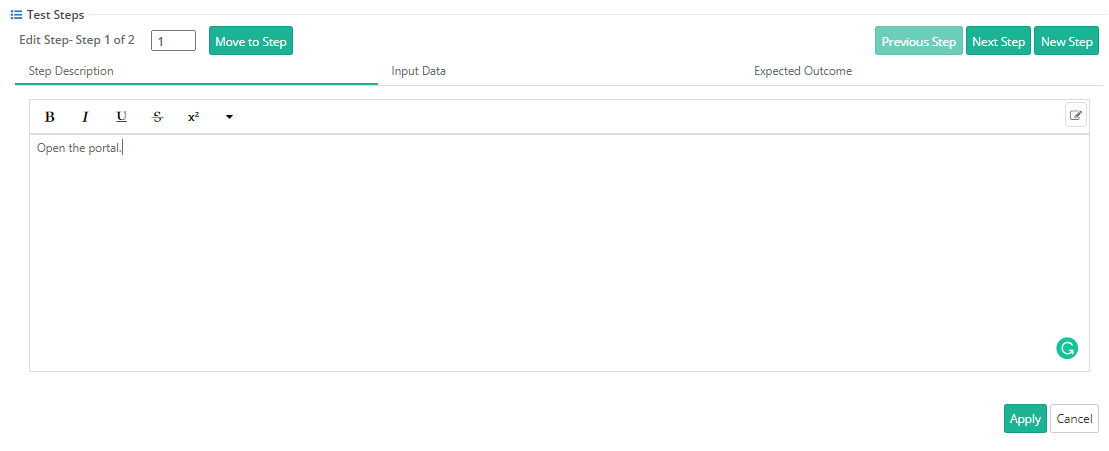Adding a Test Case
...
Note: To enable a rich text editor, the Enable Rich Text parameter should be enabled for the Project (Projects > Project / Release / Cycle). Refer to Enable Rich Text Editor for more details.
Testing Type: You can see this field on test case detail page once a test case is created. The field shows how the test case was created in QMetry: Manual or Automated. If a test case is created through UI or imported from Excel, then it is identified as a manual test case. Test Cases which are created through Automation APIs are identified as Automated test cases. The Testing Type field remains read-only.
User-Defined Fields: If UDFs are added for the test case module, then they are displayed on the Create Test Case screen and Test Case Details screen.
Enable Rich Text and Source Code Editor: Refer to the Description field above.
...
Repeat the same process to add other steps.
Rich Text Editor for Steps
There are two formats in which you can add test steps: Plain Text and Rich Text.
Enable Rich Text and Source Code Editor: Refer to the Description field above.
Note: To enable rich text editor, the Enable Rich Text parameter should be enabled for the Project (Projects > Project / Release / Cycle). Refer to Enable Rich Text Editor for more details.
Show/Hide and Re-arrange Test Step Columns
Users can opt to show/hide test steps columns (Input Data, Expected Outcome) and arrange the test steps columns on test case create screen and the Steps tab on the test case detail page.
You can organize the test steps columns in the panel through drag and drop operation. You can also opt to hide/show Input Data and Expected Outcome columns on the screen.
Click Save once you make any changes for the Test Steps panel.
Any changes in the test steps column arrangement will reflect in other places where the test steps panel is used. For example, column arrangement changes on the Execution screen will reflect in the following places.
Test Case Create page
Test Case Detail Page
Create New Version page
Exploratory testing
Edit entered steps
A. Click in the cell to modify the steps. It opens test case details page in editable mode. Just click the cell you want to edit the details of.
B. Click on the Edit icon for the step.
Also, refer to the Editing a Test Case section on this page.
The step section opens in the expanded view.
You can switch between Step Description, Input Data, and Expected Outcome. To go back to the Step Description section, click on the Move to Step button.
You can use the Previous Step and Next Step buttons to navigate to the previous/next steps.
Use the New Step button to add a new step next to the current step.
Once you are done with editing the test step, click Apply to save the changes.
Click on the cog icon.
It allows you to perform the following actions on the Steps grid:
Insert Row
Insert Shareable Test Case
Remove Row
Duplicate Row
Move: Select Index to move the step to.
Click on the Create button to save the test case.
When you open the test case detail page, the Test Case Folder Path displays the path up to the folder the test case lies within.
Removing Test Case Steps
Open the test case details page in editable mode.
On the Test Case Step(s) grid, click the Con icon for the step you want to remove.
Select Remove Row.
Changing Order of Test Case Steps
While executing test suite, the test case steps appear in the same sequence as you arranged them here for the test case.
You can easily change the order of test case steps through the following way:
On the Steps tab, click on the Con icon at right and select Move.
Select Index to move the step to.





